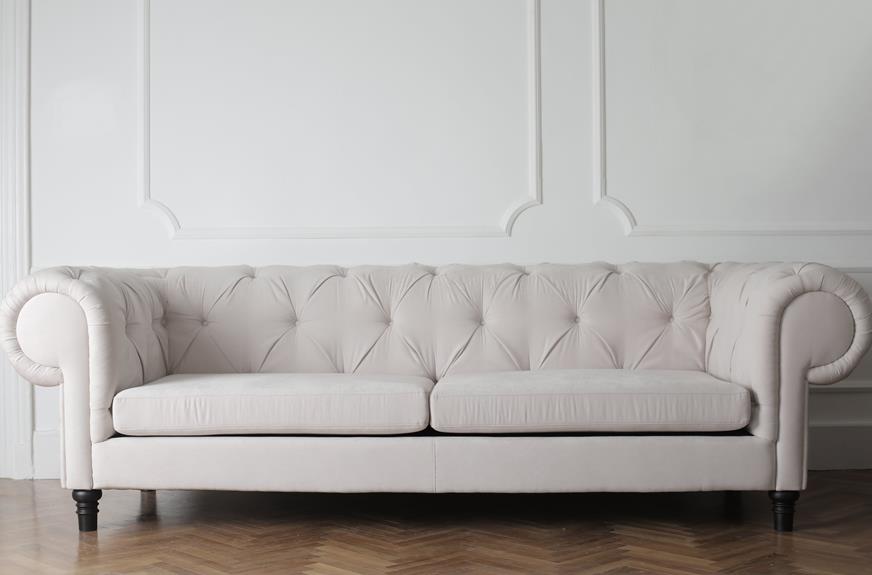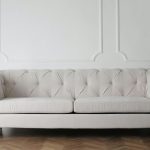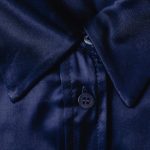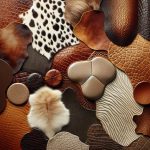When you sink into your favorite leather armchair, you can almost feel the luxurious texture and smell the rich, earthy aroma. Understanding the different grades of leather used in furniture can help you make informed decisions when purchasing pieces for your home.
From top-grain to bonded leather, each grade has its own unique characteristics and qualities. Knowing the distinctions between full-grain, corrected-grain, aniline, and other types of leather will give you a mastery over the material, allowing you to choose the perfect furniture that suits your style and needs.
Let's delve into the world of leather grades and discover the nuances that make each type special.
Key Takeaways
- Top-grain leather and full-grain leather are known for their durability and natural look and feel.
- Split-grain leather is a cost-effective option that mimics the look of top-grain leather.
- Corrected-grain leather is an affordable option with a smooth and uniform surface.
- Aniline leather is prized for its luxurious and authentic look, but requires delicate care to maintain its beauty.
Top-Grain Leather
Top-grain leather is the top layer of the hide and is known for its durability and natural look and feel. It's a highly sought-after leather for furniture due to its quality and resilience. This type of leather retains the original grain of the hide, making it incredibly strong and durable. When well-maintained, top-grain leather furniture can last for decades, developing a rich patina over time that adds to its charm.
Caring for top-grain leather furniture is essential to maintain its beauty and longevity. Regular maintenance involves gently dusting the furniture with a soft cloth and vacuuming any crevices to remove debris. Using a mild leather cleaner and conditioner every 6-12 months can help keep the leather supple and prevent it from drying out or cracking. It's crucial to avoid harsh cleaning products or excessive water, as these can damage the leather.
Full-Grain Leather
Full-grain leather is the pinnacle of leather quality for furniture. Its durability and natural beauty make it a top choice, and its strength ensures that it will last for years to come.
As it ages, full-grain leather develops a unique patina, adding character and charm to your furniture.
Durability and Natural Beauty
When choosing leather furniture, you should consider the durability and natural beauty of full-grain leather. This type of leather is highly durable, able to withstand wear and tear, making it an excellent choice for furniture that will see frequent use. Additionally, full-grain leather possesses a natural beauty that only improves with age, developing a rich patina over time.
- Full-grain leather is incredibly durable, ensuring that your furniture will last for years to come.
- Its natural beauty only improves with age, developing a rich patina that adds character to the leather.
- With minimal maintenance, such as regular cleaning and conditioning, full-grain leather can retain its beauty and durability for generations.
Considering these factors, full-grain leather isn't only a practical choice but also a timeless and elegant addition to any living space.
Highest Quality and Strength
To fully appreciate the highest quality and strength of full-grain leather used in furniture, one must understand its exceptional durability and natural beauty.
Full-grain leather is renowned for its unmatched strength and resilience, making it the top choice for quality grading in leather furniture. Unlike other types of leather, full-grain leather retains the entire grain, allowing for the natural grain to remain unaltered. This results in a material that isn't only incredibly durable but also develops a rich patina over time, enhancing its visual appeal.
The natural markings and variations in the grain further add to its unique character and charm. When it comes to leather strength and durability, full-grain leather stands out as the pinnacle of quality, ensuring that your furniture won't only last a lifetime but also age gracefully.
Ages Beautifully With Use
Experiencing full-grain leather's aging process with use enhances its appeal and character, creating a unique and personal patina. This type of leather not only withstands the test of time but also develops a rich patina, showcasing the natural beauty of the material.
Here are a few key points to consider:
- Aging Process: Full-grain leather develops a natural patina as it ages, reflecting the lifestyle and experiences of its owner.
- Leather Care: Regular conditioning and proper leather maintenance can help preserve its natural beauty and extend its lifespan.
- Timeless Appeal: Unlike other types of leather, full-grain leather maintains its quality and elegance over time, making it a worthwhile investment for furniture pieces.
Understanding the aging process and implementing appropriate leather care will ensure that your full-grain leather furniture continues to exude timeless charm.
Split-Grain Leather
You can find split-grain leather used in furniture to provide a cost-effective option with a unique texture and appearance. This type of leather is created from the underside of the hide, known as the split, which is then sanded and embossed to mimic the look of top-grain leather. While split-grain leather offers an affordable alternative, it is essential to understand its characteristics before making a purchase. Below is a table outlining the key features of split-grain leather:
| Feature | Description |
|---|---|
| Split grain leather durability | Moderate durability. Over time, it may not hold up as well as full-grain or top-grain leather. |
| Split grain leather aging characteristics | Develops a patina over time, adding a unique character to the furniture piece. |
| Cost-effectiveness | Often more affordable than full-grain or top-grain leather, providing a budget-friendly option. |
Understanding the durability and aging characteristics of split-grain leather can help you make an informed decision when selecting furniture. While it may not have the same longevity as higher-grade leathers, its unique aging process and cost-effectiveness make it a popular choice for many furniture buyers.
Corrected-Grain Leather
An affordable option for furniture, corrected-grain leather provides a cost-effective choice with a smooth and uniform surface. This type of leather is created from hides that have natural blemishes and imperfections, which are then sanded or buffed away. The surface is then embossed with a consistent grain pattern to give it a more uniform appearance. Corrected-grain leather is often finished with protective coatings to enhance its durability and resistance to stains and fading.
- Smooth Appearance: Corrected-grain leather offers a sleek and consistent surface, making it an attractive option for modern furniture designs.
- Affordability: This type of leather is more budget-friendly compared to full-grain or top-grain leather, making it a popular choice for cost-conscious consumers.
- Enhanced Durability: Through leather finishing techniques, corrected-grain leather can be treated to improve its resistance to wear and tear, making it suitable for everyday use in homes with children or pets.
Aniline Leather
Aniline leather is known for its natural grain appearance and the absence of any protective coating, giving it a luxurious and authentic look and feel. This type of leather is prized for its softness and supple texture, making it a popular choice for high-end furniture.
Because it lacks a protective finish, aniline leather requires delicate care to maintain its beauty and quality over time.
Natural Grain Appearance
How can you identify natural grain appearance leather in furniture?
Natural grain appearance leather, also known as aniline leather, is renowned for its natural and unaltered look, showcasing the unique markings and texture of the animal hide. To identify this type of leather in furniture, look for the following:
- Unblemished Surface: Aniline leather will have a smooth and unblemished surface, allowing the natural grain and markings to be clearly visible.
- Soft and Supple Texture: When touched, aniline leather will feel soft and supple, with a luxurious texture that's indicative of its high quality.
- Varied Coloration: Aniline leather often displays natural color variations and depth, adding to its authenticity and character.
These characteristics are the hallmarks of natural grain appearance leather, reflecting the care and craftsmanship involved in the leather tanning process.
No Protective Coating Applied
To identify aniline leather in furniture, examine for a lack of protective coating, which allows the natural characteristics of the leather to remain unaltered and prominently displayed. Aniline leather is highly sought after for its luxurious, soft feel and natural appearance. However, it requires diligent leather care due to the absence of protective coatings.
Regular cleaning and conditioning are essential to maintain the leather's beauty and prolong its life. Over time, aniline leather develops a rich patina, enhancing its appearance and uniqueness. As it ages, the leather absorbs oils and develops a lovely sheen, further adding to its allure.
To retain its quality, it's crucial to protect aniline leather from direct sunlight and spills, as they can cause irreparable damage. Proper care and maintenance will ensure that your aniline leather furniture ages gracefully, becoming even more beautiful with time.
Semi-Aniline Leather
When shopping for furniture, you'll find that semi-aniline leather is a popular choice due to its durability and natural appearance. This type of leather is known for its high quality and is often used in high-end furniture pieces.
Here are a few key points to keep in mind about semi-aniline leather:
- Care and Maintenance: Semi-aniline leather requires regular maintenance to keep it looking its best. It's important to clean up spills promptly and to use a specialized leather conditioner to keep the leather supple and prevent it from drying out.
- Benefits: One of the main benefits of semi-aniline leather is that it retains the natural look and texture of the leather while also being more resistant to wear and staining compared to aniline leather. It strikes a good balance between natural appearance and durability.
- Drawbacks: While semi-aniline leather offers greater protection against wear and staining compared to aniline leather, it's still more prone to damage than fully protected leather types. It may also be more expensive than other types of leather due to its high quality and durability.
Nubuck Leather
Exploring the benefits and characteristics of nubuck leather enhances your understanding of the different grades of leather used in furniture.
Nubuck leather is a top-grain leather that has been buffed to create a velvety surface. This process gives it a luxurious texture and appearance, making it a popular choice for high-end furniture.
Nubuck is more durable than suede due to its finer grain and tighter fiber structure, making it less prone to damage from wear and tear. However, it requires regular maintenance to keep it looking its best.
Nubuck leather care involves using a specialized nubuck brush to gently remove dirt and restore the nap, as well as applying a protective spray to guard against stains and moisture.
When comparing nubuck leather vs suede, nubuck is more resilient and has a finer texture, while suede has a softer feel but is more susceptible to damage. Understanding the distinctions between nubuck and suede can help you make an informed decision when choosing furniture.
With proper care, nubuck furniture can withstand the test of time, providing both elegance and durability to your living space.
Bonded Leather
Bonded leather is a composite material made from leftover leather scraps and fibers mixed with polyurethane. This manufacturing process creates a versatile and cost-effective material that resembles genuine leather.
Here are a few key points to understand about bonded leather:
- Manufacturing: Bonded leather is created by bonding leather scraps and fibers together with polyurethane, often in a process called embossing. The result is a material that's more affordable than genuine leather, making it a popular choice for furniture upholstery and accessories.
- Properties: While bonded leather may look like genuine leather, it's important to note that it differs in quality and durability. Bonded leather tends to be less durable and more susceptible to wear and tear compared to genuine leather. It also lacks the natural aging and patina that genuine leather develops over time.
- Comparison with Genuine Leather: When considering furniture or other items made with bonded leather, it's essential to understand the differences in properties compared to genuine leather. Bonded leather may offer a similar appearance at a lower cost, but it's crucial to weigh the trade-offs in terms of longevity and performance.
Understanding the manufacturing process and properties of bonded leather can help you make informed decisions when selecting furniture or leather goods.
Frequently Asked Questions
Can Different Grades of Leather Be Combined in a Single Piece of Furniture?
Yes, different grades of leather can be combined in a single piece of furniture. This process, known as leather blending or fusion, allows for a diverse and customized look while maintaining quality and durability.
How Do the Different Grades of Leather Affect the Durability and Lifespan of Furniture?
Different grades of leather affect furniture's durability and lifespan. Higher quality leather, from a careful tanning process, increases durability and sustainability. Understanding these grades helps you select long-lasting, high-quality furniture for your home.
Are Certain Grades of Leather More Suitable for Specific Types of Furniture, Such as Sofas Versus Chairs?
When it comes to choosing leather for furniture, different grades are better suited for specific applications. Factors like durability, softness, and resistance to wear and tear vary, making some grades better for sofas and others for chairs.
Do the Different Grades of Leather Require Different Types of Maintenance and Care?
Different grades of leather have varying maintenance requirements, so it's important to know the care differences. Understanding the combination possibilities for different grades can help you make informed decisions about the maintenance needs of your leather furniture.
Are There Any Environmental or Ethical Considerations Associated With the Use of Different Grades of Leather in Furniture Production?
Consider the environmental impact and ethical sourcing when selecting leather for furniture. Lower grade leathers may be produced with more chemicals and less regard for animal welfare. Opt for higher grades and ethical sourcing for a more sustainable choice.
- Does Chiffon Fabric Stink - July 15, 2025
- Does Chiffon Fabric Affect the Economy - July 15, 2025
- Does Cotton Fabric Have a Nap - July 15, 2025






